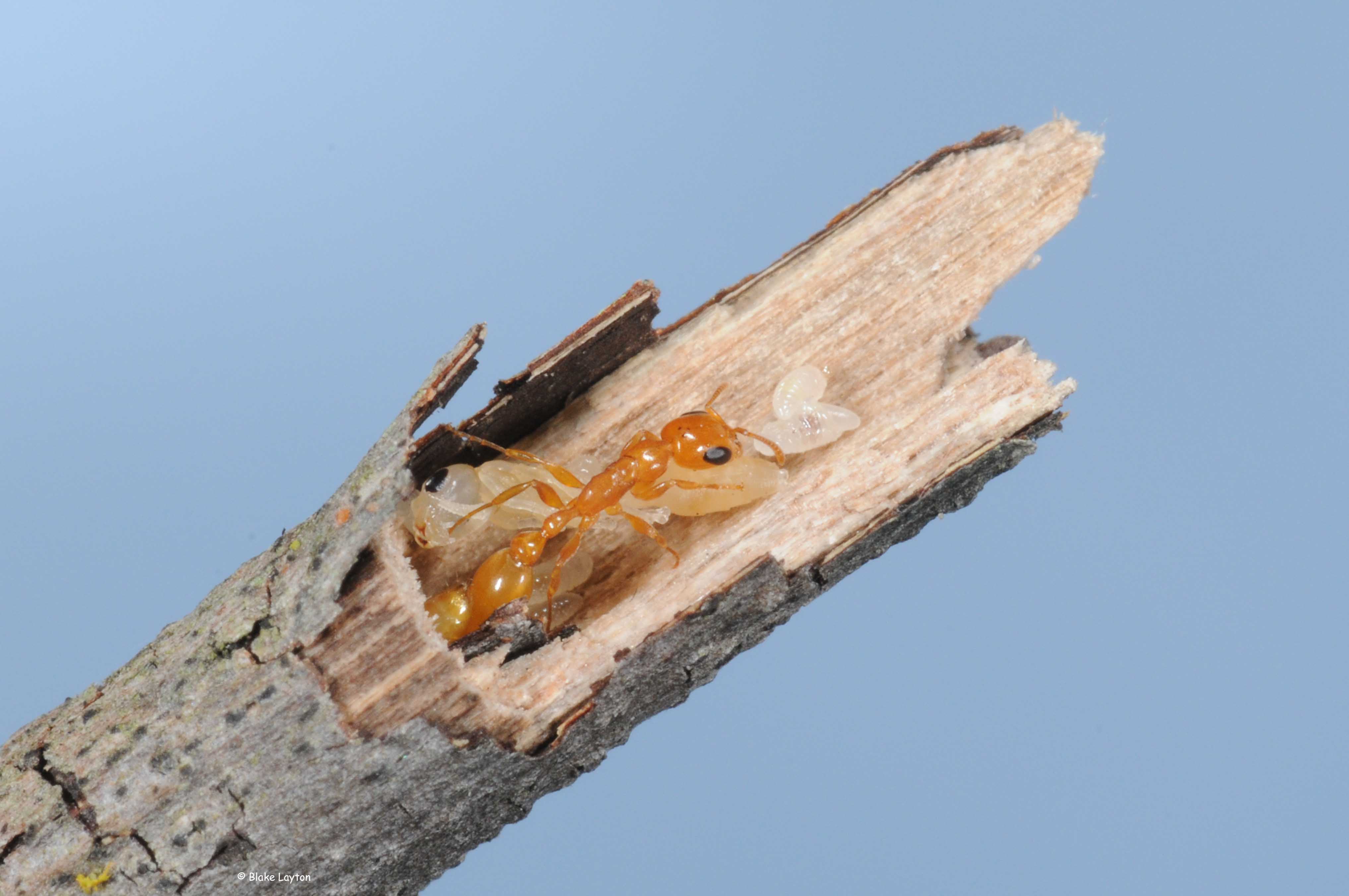Pallid Twig Ant Vol. 9, No. 19
Related News
June 17, 2015
June 4, 2015
May 19, 2015
Order: Hymenoptera
Family: Formicidae
 “We’ve been seeing these little yellow ants around the place for the past few years but can’t ever find their nests. They are in the fig tree and the vegetable garden, but we see them most when we are sitting in the swing under the vine arbor. Sometimes they sting, and it hurts a lot more than you might think based on their size.”
“We’ve been seeing these little yellow ants around the place for the past few years but can’t ever find their nests. They are in the fig tree and the vegetable garden, but we see them most when we are sitting in the swing under the vine arbor. Sometimes they sting, and it hurts a lot more than you might think based on their size.”
With their big eyes and sleek, amber bodies, pallid twig ants are cute little ants. They are only about 3/16 inches long but are relatively easy to spot because of their shiny amber color. These ants normally forage above ground, along the twigs, stems, limbs, and vines of the plants in which they nest, and it can be fun to watch them as they crawl about in search of food. They feed on both insects and nectar, which they may collect from blooms and extra-floral nectaries or from aphids and other honeydew-producing insects. Spend a little time watching them forage and you can probably follow one back to its nest, but this won’t be a mound in the ground.
Pallid twig ants normally nest in hollow plant stems. They are not picky about the type of plant but have definite preferences for cavity size—not too big and not too small (see photo). They prefer an entrance small enough it can be blocked and guarded by a single worker, but the nest cavity may extend anywhere from a few inches to a couple of feet inside the stem. Colony size can range from a few dozen to a couple hundred ants, and there can be multiple queens per colony and multiple nest sites per colony.
When pallid twig ants are abundant in an area it is because there are plants with hollow stems of the right size for nesting. This may be herbaceous plants, such as stems of grasses, vines, or even trees, such as fig.
When pallid twig ants are abundant in an area frequented by people, people sometimes get stung, and the sting is surprisingly painful relative to the size of the ant. Victims often describe it as being more painful than a fire ant sting but less painful than a honeybee. Pallid twig ants do not aggressively defend their nest like fire ants, and most stings occur when foraging ants fall or crawl from foliage onto people and get trapped between skin and clothing. Occasionally, stings become a recurring problem that causes people to seek a remedy. Often the remedy involves cutting or pruning the plant where the ants are nesting—like those vines in the arbor over the swing.
Slender twig ant, Pseudomyrmex gracilis, is a similar, but larger and darker colored, species of twig ant that is more common in the southern portion of the state. Nest habits are similar, but the sting is reported to be more painful.
Thanks to Mr. Joe MacGown, our local ant expert here at MSU, for his help with this article.
Blake Layton, Extension Entomology Specialist, Mississippi State University Extension Service.
The information given here is for educational purposes only. Always read and follow current label directions. Specific commercial products are mentioned as examples only and reference to specific products or trade names is made with the understanding that no discrimination is intended to other products that may also be suitable and appropriately labeled.
Bug’s Eye View is now on Facebook. Join the Bug's Eye View Facebook group here.